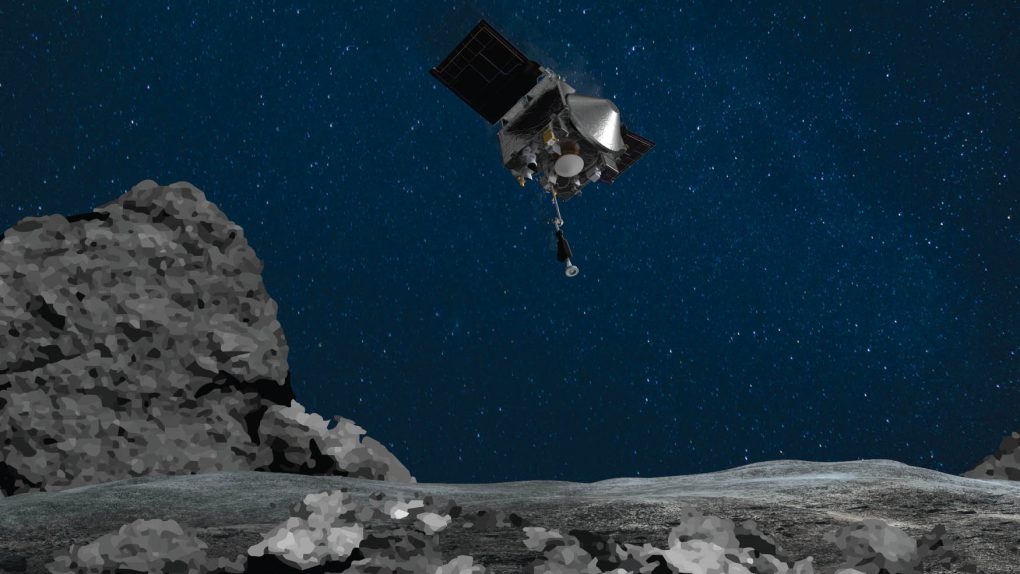- NASA’s OSIRIS-REx spacecraft successfully touched down on the asteroid called Benny last week, and we now know that it grabbed enough material to consider that operation a success.
- The sample will now be stowed away for the trip back to Earth.
- It will be a couple of years before the spacecraft makes it back to our planet.
Last week, NASA’s OSIRIS-REx spacecraft pulled off a feat that it had never attempted before. After spending months orbiting the space rock known as Bennu, the probe touched down on the asteroid and attempted to snatch a sample of its material. Now, several days later, we finally know how much materially the probe managed to grab.
NASA knew that OSIRIS-REx did what it was designed to do, by dipping down to the asteroid’s surface and shooting a jet of gas to kick up a bunch of loose material and then grab it with a collection mechanism. However, they weren’t sure exactly how much material was gathered, and we were told we’d have to wait days or perhaps a week to find that out.
Now, new data and images from the spacecraft have provided NASA with enough information to know that its sample heading did indeed snag a bunch of asteroid material and that it should be enough to consider the challenging goal complete.
For the spacecraft to avoid a second attempt at the collection operation, NASA wanted it to grab at least two ounces of material. Based on the data and new images sent back by OSIRIS-REx, it appears as though it grabbed more than enough, and it’s that material that will further scientific research of the asteroid back on Earth.

“Bennu continues to surprise us with great science and also throwing a few curveballs,” NASA’s Thomas Zurbuchen said in a statement. “And although we may have to move more quickly to stow the sample, it’s not a bad problem to have. We are so excited to see what appears to be an abundant sample that will inspire science for decades beyond this historic moment.”
Of course, the mission isn’t over yet. The spacecraft will now stow the sample for its long trek back to Earth. The probe will have to depart the asteroid Bennu and then travel back to Earth in a journey that will take years to complete.
“We are working to keep up with our own success here, and my job is to safely return as large a sample of Bennu as possible,” OSIRIS-REx principal investigator Dante Lauretta said in a statement “The loss of mass is of concern to me, so I’m strongly encouraging the team to stow this precious sample as quickly as possible.”
It’ll be a couple of years before the sample arrives back on Earth, but once it does you can be sure there will be plenty of scientists eager to take a look at it.








